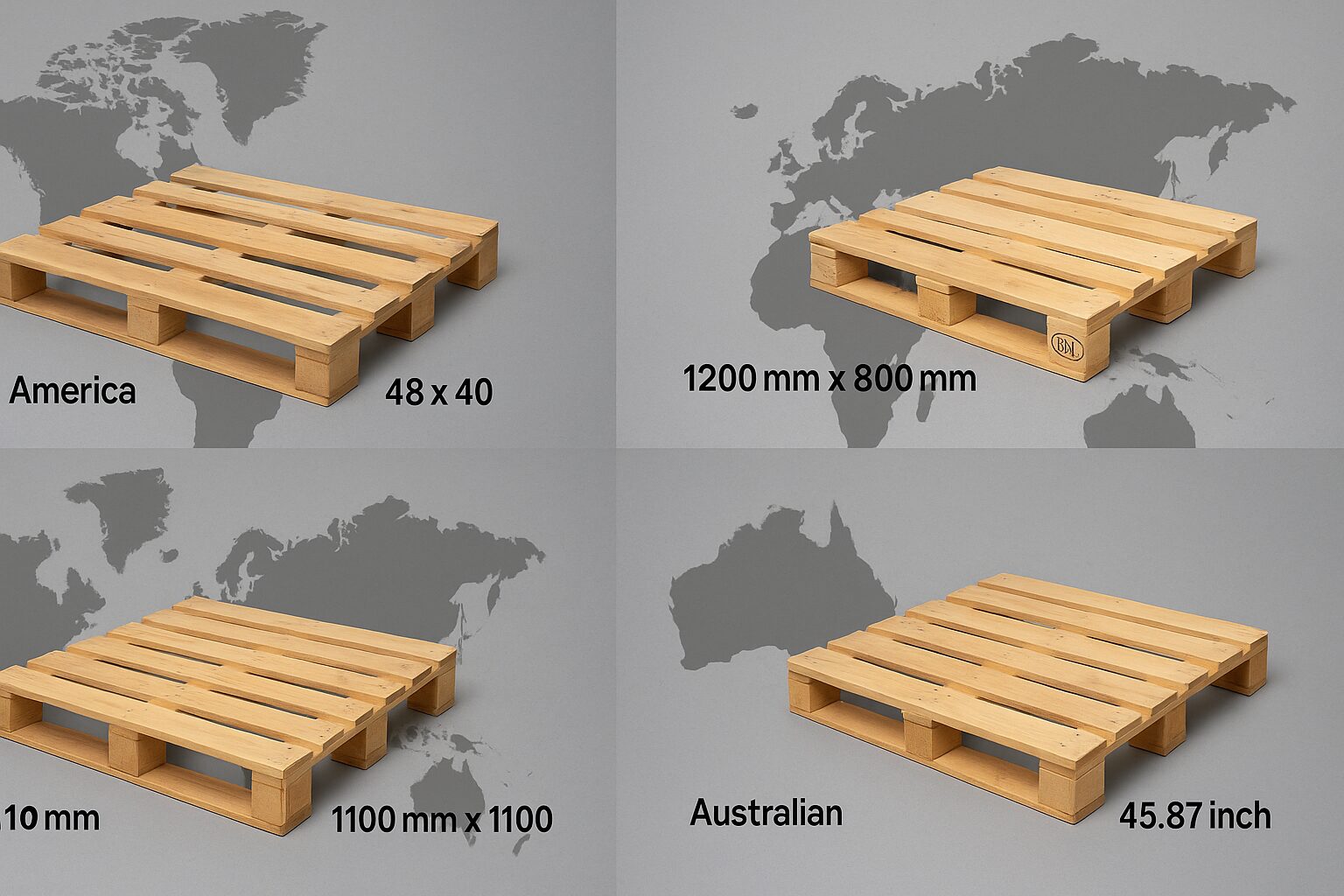Pallets are the backbone of global logistics. From warehouses in Germany to shipping docks in Japan, pallets make the movement of goods seamless and efficient. However, not all pallets are created equal. In fact, pallet standards vary widely depending on the region, and understanding those differences can make or break a supply chain operation.
Why Pallet Standards Matter in Global Trade
When businesses transport goods across borders, standardization becomes essential. Pallets need to be compatible with handling equipment, storage systems, and international regulations. If a company uses the wrong type of pallet for a particular region, it could face delays, increased shipping costs, or even damage to goods.
North America: The Dominance of the GMA Pallet
In the United States, Canada, and Mexico, the Grocery Manufacturers Association (GMA) pallet is the reigning standard. It measures 48 inches by 40 inches (1219 mm x 1016 mm) and is designed to fit perfectly in North American racking systems and trucks.
This pallet style is often made of wood, although plastic and metal alternatives are growing in popularity due to their durability and hygienic properties. The GMA standard has helped streamline the retail and food industries in particular, allowing for efficient warehouse operations and ease of transport.
Europe: The Euro Pallet System
Europe relies heavily on the European Pallet Association (EPAL) and its Euro pallet, which measures 1200 mm x 800 mm (47.24 inches x 31.5 inches). These pallets are designed to work seamlessly within European racking systems and transport containers.
A unique aspect of Euro pallets is the EPAL stamp, which certifies that the pallet meets strict manufacturing and quality control standards. This consistency helps reduce handling issues and ensures safe stacking and loading procedures.
Europe also makes use of a secondary standard: the UK standard pallet, which measures 1200 mm x 1000 mm (47.2 inches x 39.4 inches). While less common than the Euro pallet, it is still in use in certain industries and is often compatible with international shipping requirements.
Asia: A Region with Diverse Standards
Asia is home to a variety of pallet standards, often driven by local manufacturing practices and export needs.
Japan
Japan’s industrial sector typically uses a 1100 mm x 1100 mm (43.3 inches x 43.3 inches) pallet. This square pallet works well in containerized shipping, making it ideal for export-heavy industries. Japanese pallets tend to be made from high-quality wood or plastic and are known for their clean design and precise dimensions.
China
China lacks a single dominant pallet standard, but many companies use the 1200 mm x 1000 mm size, which aligns with both European and Australian standards. Due to its manufacturing power, China also produces custom-sized pallets for specific industries or clients, which adds to the complexity of international trade logistics.
Australia: A Unique Pallet Size
Australia uses a distinctive pallet standard: the 1165 mm x 1165 mm (45.87 inches x 45.87 inches) pallet. This size is tailored to fit Australian rail containers and storage systems.
Because of its unique dimensions, Australian pallets are not always compatible with international standards. Companies that export from Australia often switch to Euro or GMA pallets to facilitate easier cross-border logistics.
South America: Mixed Adoption of Standards
In South America, pallet standards vary from country to country, but there is a gradual shift toward adopting the GMA and Euro pallet sizes. In Brazil, for instance, both the 1000 mm x 1200 mm and 800 mm x 1200 mm sizes are commonly used.
Because the region is still developing unified logistics frameworks, companies need to stay flexible and be prepared to accommodate different standards depending on their trading partners.
Middle East and Africa: Customization and Imports
The Middle East and parts of Africa often rely on imported pallets or adopt standards based on their main trading partners. For instance, countries trading heavily with Europe use Euro pallets, while those with strong ties to North America prefer GMA dimensions.
However, due to infrastructure challenges and limited access to standard materials, custom pallets are frequently used. These regions are rapidly modernizing, and the demand for standardized, high-quality pallets is on the rise.
Understanding Standard Sizes and Weights
For businesses navigating global trade, knowing the typical sizes and weights of standard pallets is crucial. This ensures compatibility with warehousing systems, transport containers, and customs regulations. A reliable source for this data is https://www.sincerepallet.com/standard-pallet-sizes-weights/,which offers a comprehensive overview of industry norms.
Heat Treatment and ISPM-15 Compliance
A critical global standard for pallets is ISPM-15, an international regulation requiring that wooden pallets be heat-treated or fumigated to prevent the spread of pests. Countries around the world, including the U.S., EU members, China, and Australia, enforce this standard for incoming goods.
Non-compliance can result in shipments being rejected or destroyed. Companies must ensure that their pallets bear the appropriate ISPM-15 stamp, which certifies that they meet quarantine regulations.
The Push Toward Plastic and Sustainable Materials
Across all regions, there’s growing interest in sustainable pallet options, including plastic, metal, and corrugated cardboard. Plastic pallets, in particular, are valued for their reusability, cleanliness, and consistent dimensions. They’re widely used in pharmaceutical, food, and electronics industries.
However, cost remains a limiting factor for widespread adoption in some developing regions. As recycling technology and production costs improve, alternative materials are expected to play a larger role in global pallet logistics.
Conclusion: Adapting to Global Pallet Standards
For any company involved in international logistics, understanding regional pallet standards is not just a matter of convenience—it’s a necessity. Whether dealing with a Euro pallet in Germany, a GMA pallet in the U.S., or a custom-sized pallet in the Middle East, compatibility ensures smooth transport, reduced costs, and compliance with global regulations.





























